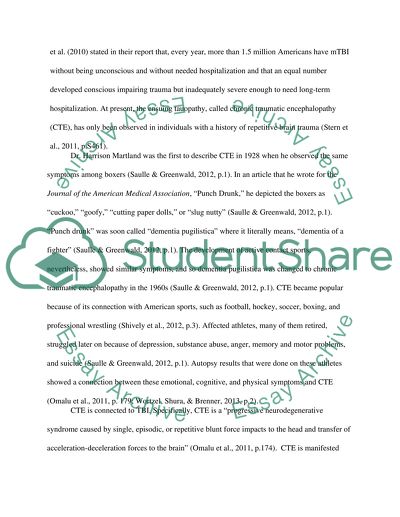Cite this document
(“Chronic Traumatic Encephalopathy Research Paper”, n.d.)
Retrieved from https://studentshare.org/psychology/1651187-chronic-traumatic-encephalopathy
Retrieved from https://studentshare.org/psychology/1651187-chronic-traumatic-encephalopathy
(Chronic Traumatic Encephalopathy Research Paper)
https://studentshare.org/psychology/1651187-chronic-traumatic-encephalopathy.
https://studentshare.org/psychology/1651187-chronic-traumatic-encephalopathy.
“Chronic Traumatic Encephalopathy Research Paper”, n.d. https://studentshare.org/psychology/1651187-chronic-traumatic-encephalopathy.


